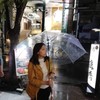Photo by Tamara Mohle on Unsplash
Coral reefs are important for many reasons. They protect coastlines from the damaging effects of wave action and tropical storms, and serve as a shelter for marine organisms. The Philippines is one of the countries in the world with the most coral, but they’re fast disappearing due to climate change, pollution, and overfishing.Doing their part to address this problem is a group of marine scientists from the University of the Philippines (UP) that figured out a way to monitor coral without having to submerge people underwater, saving time and effort. They invented A Rapid Assessment Instrument for Coastal Benthic Habitats (ARAICoBeH), a device made with a GoPro camera and a transducer viewer, according to the group’s study published in Springer last week.Coral are usually monitored by scuba divers who study the damage and decide on the proper approach needed to help marine protected areas. However, the data gathered through this method is usually limited due to cost and time constraints.The group of UP scientists, half of which are still students, developed ARAICoBeH to enable large-scale but low-cost mapping without compromising accuracy. The name is a funny reference to the Filipino phrase “Aray ko beh,” which translates to “Ouch Babe.” The scientists thought a creative name would help people remember the research.Patrick Lawrence Cadelina, one of the marine scientists that worked on the project, told VICE that they were inspired by their experiences during two national coral reef assessment programs in 2014. They had to cover as much coral area as possible but were unable to finish since a person can only be submerged underwater for so long.It took the group about a year in total to research, develop, and code the algorithm. They eventually tested the device in biodiverse areas, like El Nido, Palawan.The system works by taking underwater photos and acquiring the accurate locations of the coral, which will undergo data processing. Thousands of pictures are collected within a few days of field sampling and are organised, geotagged, and filed swiftly with the team’s algorithm.“We are hoping that with this low-cost system, we can assess the status of large areas of corals in a short period of time. The results can be of use for decision making of marine protected areas,” Cadelina said.They hope the instrument can be used nationwide in the future.The Philippines is home to more than 500 coral species and 2,000 species of fish. It is the world’s third most coral-rich area after Indonesia and Australia, but that bounty may not last long as the country has lost “a third of the coral in the last 20 years,” marine biologist Dr. Wilfredo Y. Licuanan told BusinessWorld in 2018.Follow Lia on Instagram and Twitter.
Advertisement
